Personal Training Workout Templates (Free Examples)
Get free personal training workout templates to quickly start working with clients. Check out personal training program examples from other trainers and download free personal trainer templates.

Learn how to use the platform with the best personal training software and the best gym management software from Exercise.com to create workout plans, deliver workouts to clients, sell personal training online, run fitness groups, make money selling workouts online, offer fitness challenges, time-release automated workout programming, and, of course, share personal training workout program templates with other personal trainers at your gym, and if you have multiple gym locations, you can even share your workout program templates free with your other locations. Be sure to check out our free fitness templates like the personal trainer session plan template, or the small group training program template, or the personal trainer client intake template.
(And if you love personal training workout program templates in PDF form because you prefer to hand out paper workout plans to your clients while in the gym, then no problem, because the Exercise.com platform generates PDF workout plan templates automatically for every workout plan you create! So you can deliver your workout plans via your own custom branded fitness apps, via the web, via paper, you name it.)
Book a demo on the Exercise.com software platform to add personal training templates right into the workout creator and make running your personal training business or gym business easy!

With Exercise.com, you get free workout templates for personal trainers because you don’t have to print out a personal trainer client tracking sheet, or fuss with strength training program templates in PDFs, wrangle personal training Excel templates (free or not, your clients expect better!), personal training program templates in PDF, but you can manage clients and workout plans right in your custom-branded web platform and your custom-branded fitness app with the best personal trainer client tracking apps for creating workout plan templates at scale and delivering them to your clients.
Create personal training templates with the workout plan creator.

Use the personal trainer workout template to easily deliver workouts to your clients via custom branded personal trainer apps. Publish your custom branded fitness apps to iOS and Android so you can offer a premium experience to your community.

Run fitness challenges, create online workout groups, do distance training, and of course, deliver fitness assessments and workouts, all right within the Exercise.com platform (custom branded to your brand).

Process payments easily online or in-person with the best gym payment processing software and the best apps for personal trainers who want their very own fitness app.

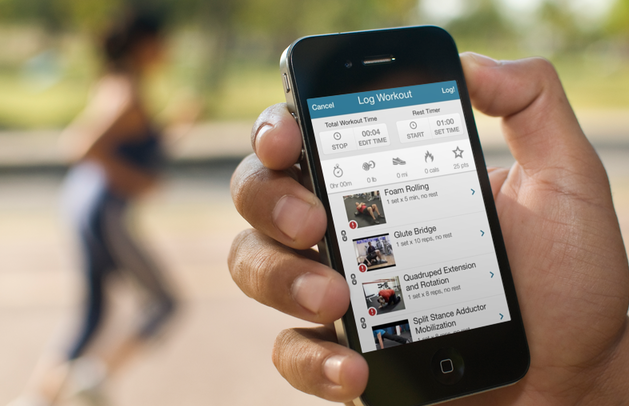
Personal Training Workout Templates Free Tips & Examples
Using these free workout templates for personal trainers with the workout program design templates in the best workout plan creator software makes it easy to create a personal training plan template that you can share with other trainers on your staff, or just re-use yourself to quickly clone workouts rather than starting from scratch. Taking your time to create a nicely laid out PT program template is often much better than grabbing random personal training Excel templates free online or searching for personal trainer templates free download options from sources unknown. While you don’t have to be certified to sell workout plans, it’s often a very smart idea to choose one of the best personal trainer certifications when you learn how to become a personal trainer.
- Organizing your personal training templates saves time without compromising effectiveness.
- Follow the basic principles of workout program design when creating or choosing a free personal training program template to use.
- Choose from the free personal trainer templates based on your personal style and who you train.
- See how Exercise.com’s workout creation software can help you deliver the best service to your clients.
Using personal trainer workout templates in Excel or Google Sheets can be a huge time-saver, but they do have limitations over time. While it’s true that as personal trainers, our biggest task and time-cost outside of actual client sessions is background work like workout planning, its also important to have a scalable personal training software solution so that you can generate revenue and save time training clients. While those who approach their duties as a trainer casually may be content with making it up as they go, those professionals who take the job seriously often spend a great deal of time and energy making their clients’ programs and sometimes starting with free online personal training program templates is just the way to get started.
That’s time that could put a limit on how much you can grow your personal business.
You can level up quickly to a system that saves time and prevents stress while assuring your workouts are better than ever. You’ll do so by using personal training templates; either existing ones or those of your own design. In doing so you’ll save a ton of time without sacrificing the quality or personalization.There are many different online personal training templates, but are they any good? Should you use a free personal training session plan template? Where can you find the best free personal trainer workout plan templates online? Check out the free personal training session plan samples on this page and then load them up in the best workout plan creator software to manage your workout plans online. You can even make money from fitness by selling workout plans online for money.
A training program template for personal trainers is simply a basic framework of a program into which you’ll add the movements, reps, and rest your individual client needs based on their goal and ability.
Here’s the reality: people who have similar goals are more alike than they are different. Thus, the training plan that is effective for getting one of your clients strong is likely great for the others or at least a 90% match. Why then would you start from a blank slate with every single one?

In this article, we’ll go over the need-to-know principles of workout design and some of the best personal training program design templates for both strength training and conditioning, and get you finding and creating the best personal trainer schedule template that you can use and modify again and again. While a big list of free personal training Excel templates can certainly come in handy, what you really want to do is use an automated online tool like Exercise.com so that you can create your workout plans one time and then clone them as workout plan templates to be used and re-used (modifying as needed) over and over again, freeing up more of your time to actually train clients, sell workout programming, and generate more revenue. Using personal training templates free of charge can help you accelerate your personal training business.

Creating programs and workouts for your clients is faster and more organized with Exercise.com’s Fitness Business Management software. You can use our workout creator to generate and save your best templates letting you quickly edit or distribute them to clients at your gym or anywhere in the world. Use the personal training schedule templates coupled with the personal training tracking sheet to manage clients, create training plans, and more.

Using Workout Templates in Personal Training Software
With its customizable PT fitness apps and web portals, automated workout tracking, flexible workout programming, detailed fitness business reporting, and top-notch customer support, Exercise.com is a top choice for personal trainers and fitness businesses to create workout templates easily using software. Here’s how you can get started using a workout template for personal trainers.
Workout Plan Creator
Create workout plans for parents and dependents, teams and more.

Payments
Process payments for open gym, classes, and personal training.

Landing Pages
Create gym landing pages easily.
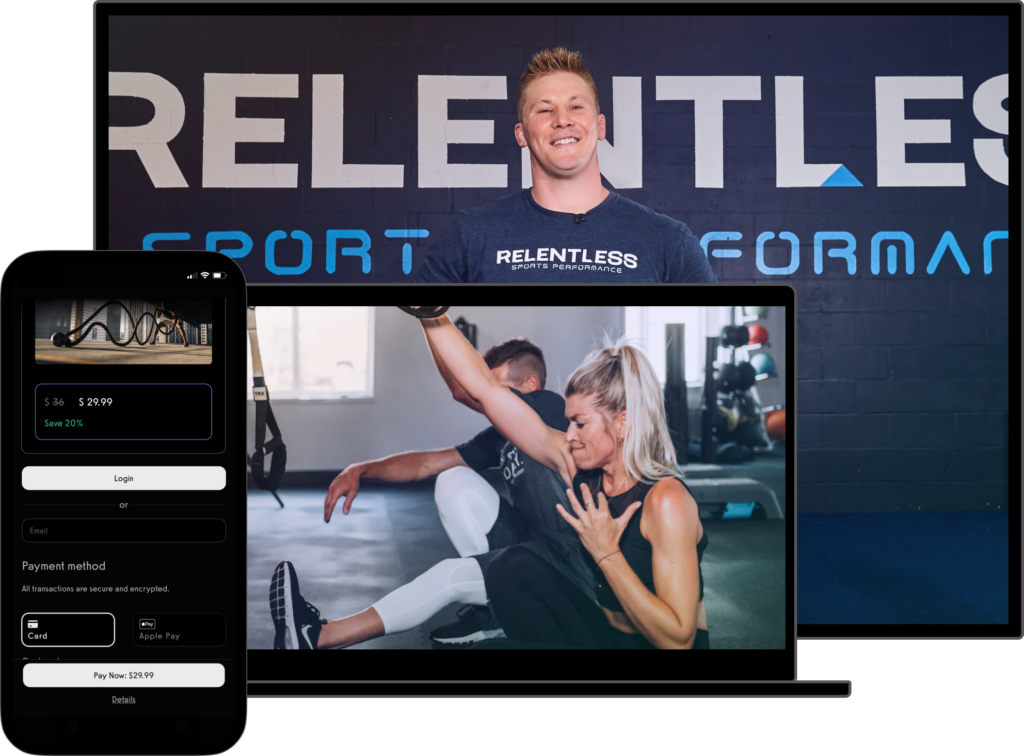
Fitness Challenges
Manage fitness challenges (Read More: 100+ Fitness Challenge Ideas)
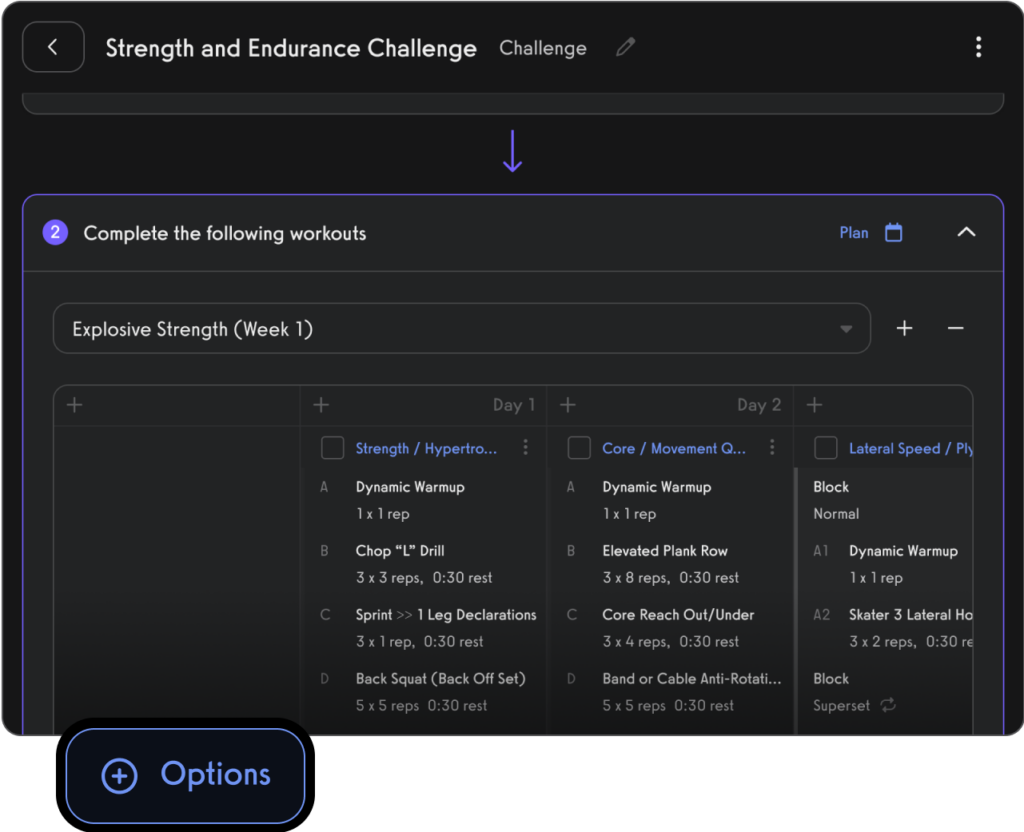
On-Demand Fitness Content
Offer on-demand fitness content.
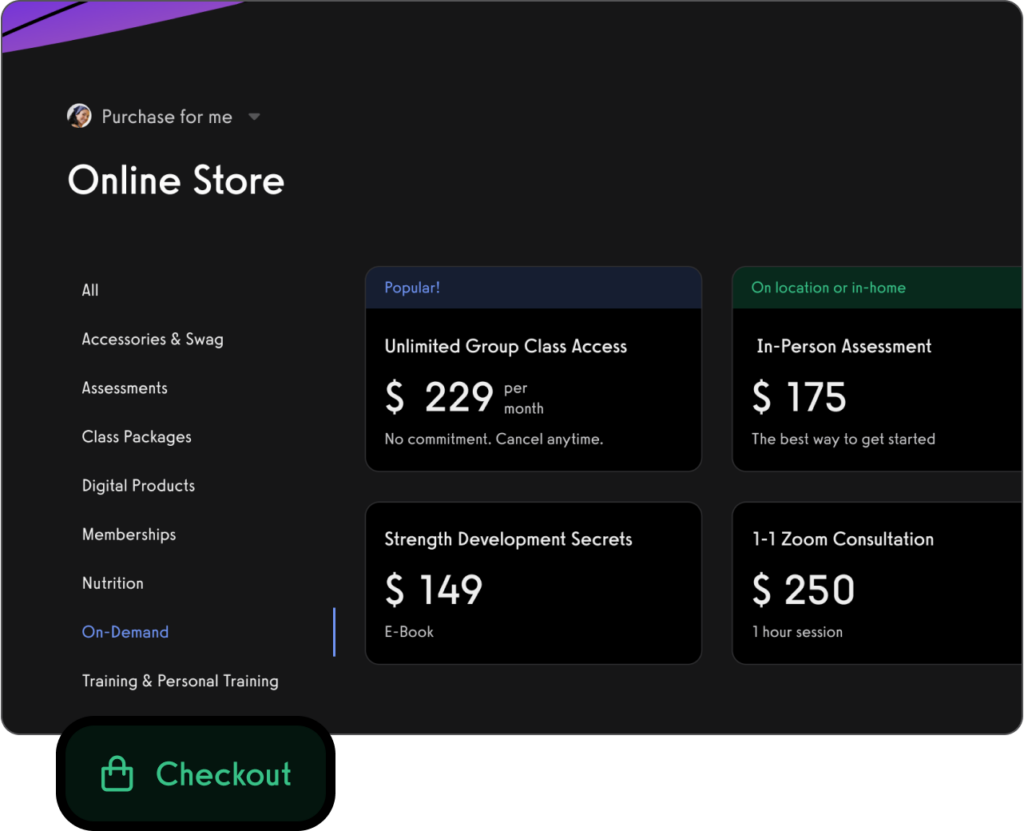
Fitness Classes and Groups
Create classes and fitness groups.

Fitness Livestreaming
Conduct gym livestreaming easily.
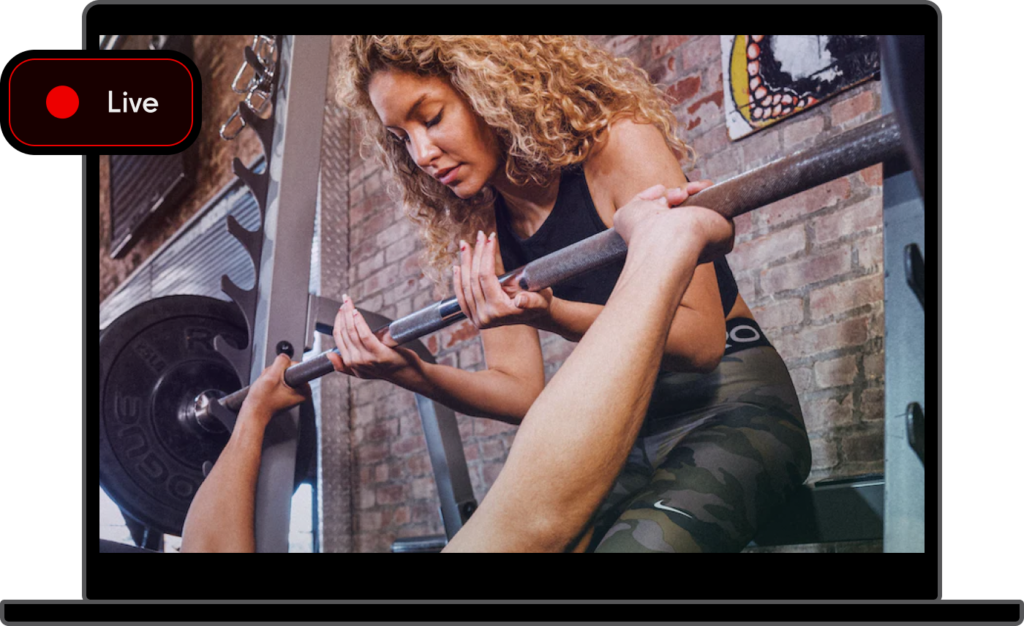
Automations
Engage with clients via automations.
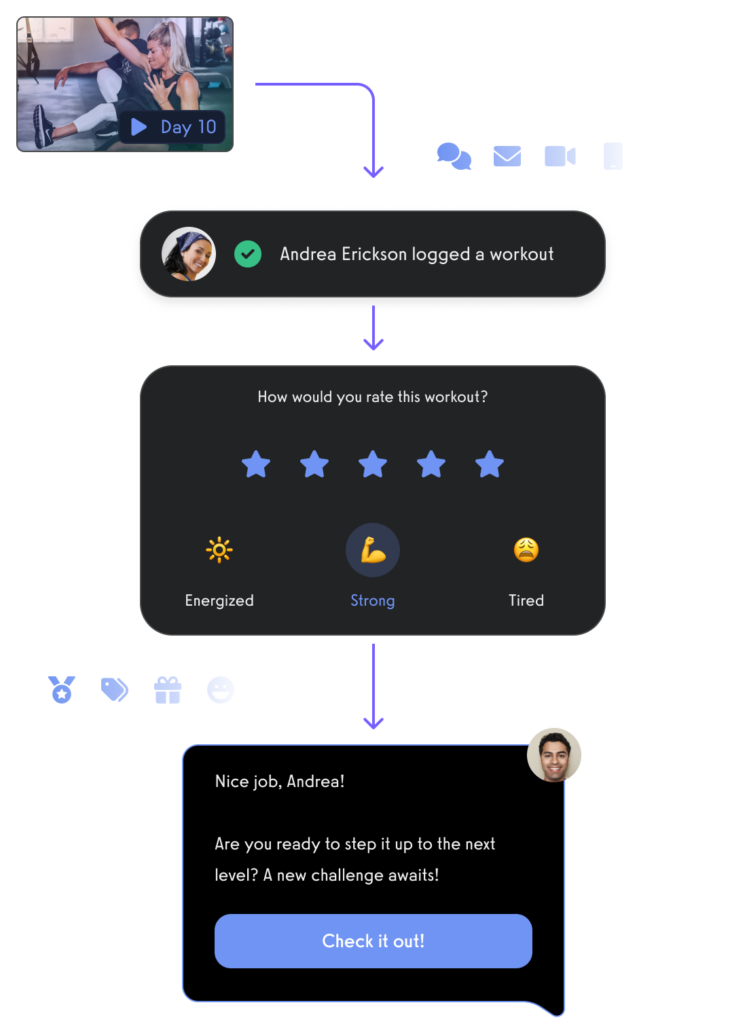
CRM
Manage leads with a gym CRM.
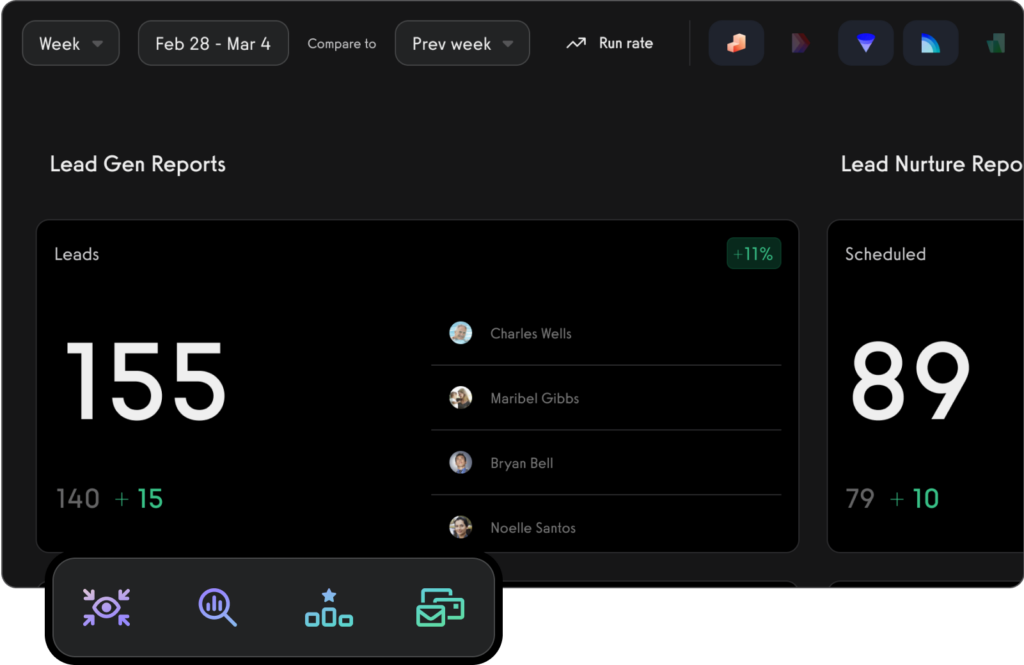
Fitness Assessments
Create and send fitness assessments with ease.
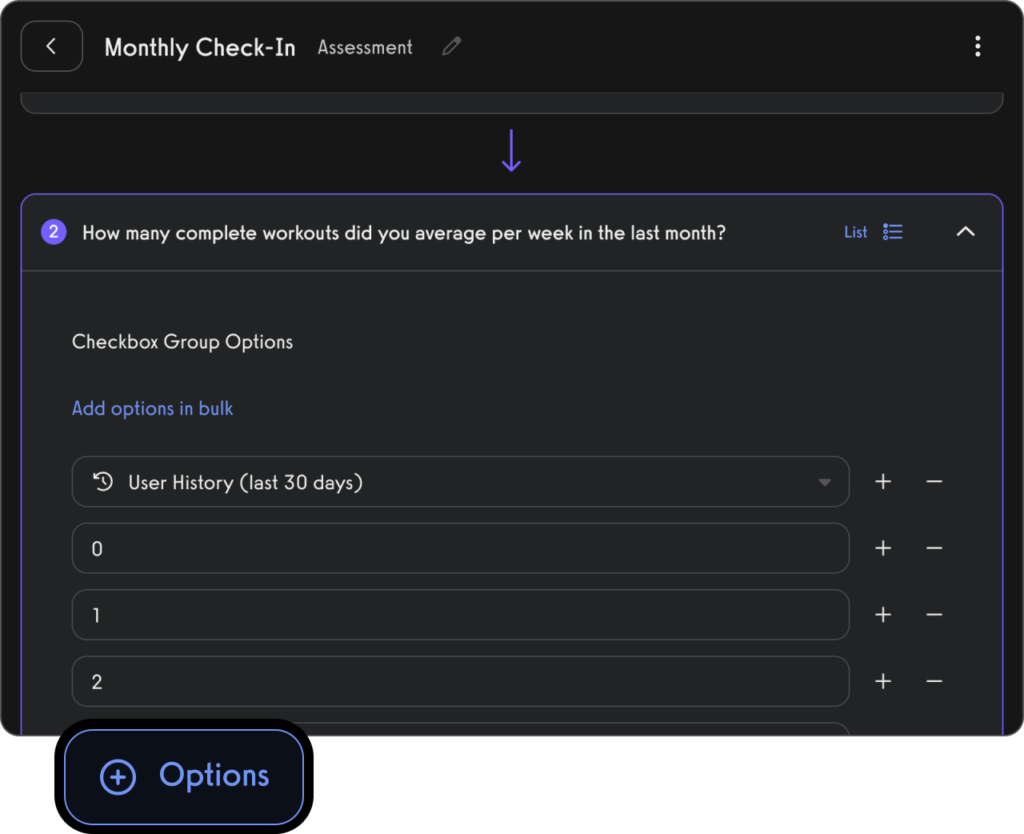
Habit Tracking
Use fitness habit tracking to inspire and motivate gym members and clients.

Progress Photos
Use fitness progress photos to engage with members.
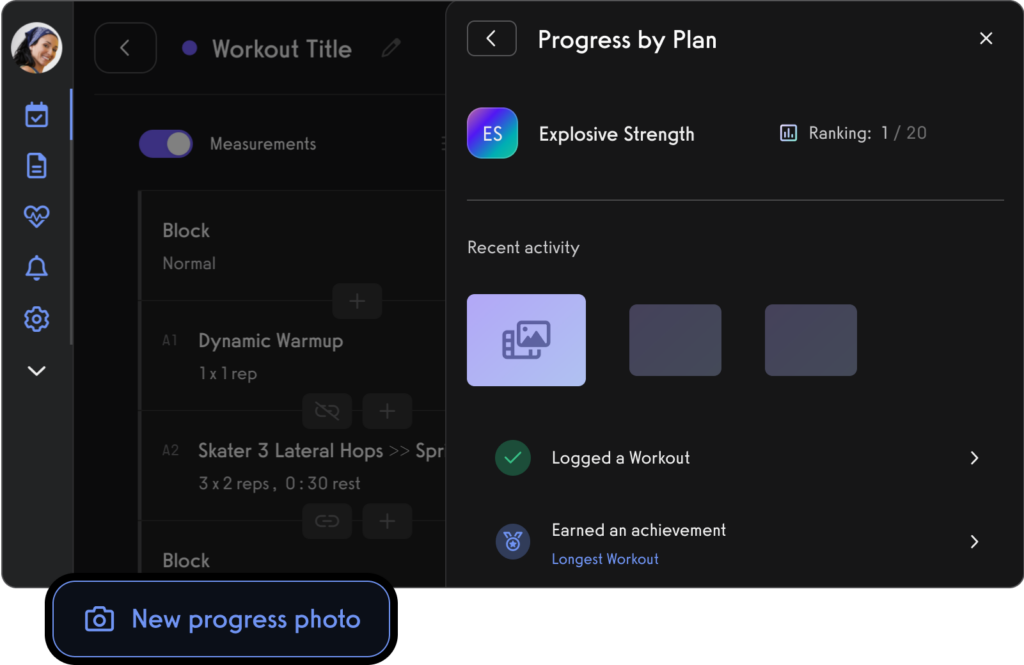
Leaderboards
Use fitness leaderboards to track event performance and inspire healthy competition.
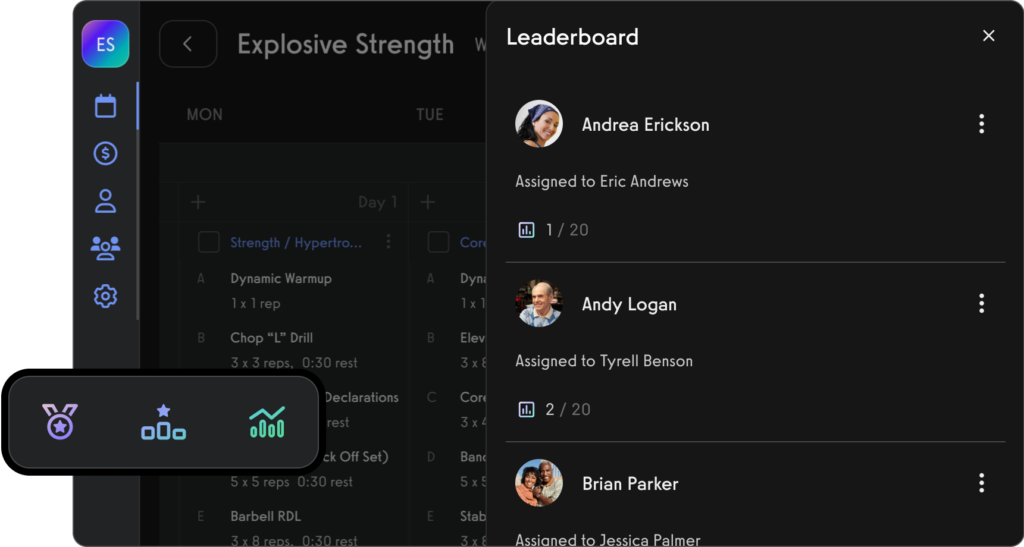
Supersets
Create exercise supersets in a snap.
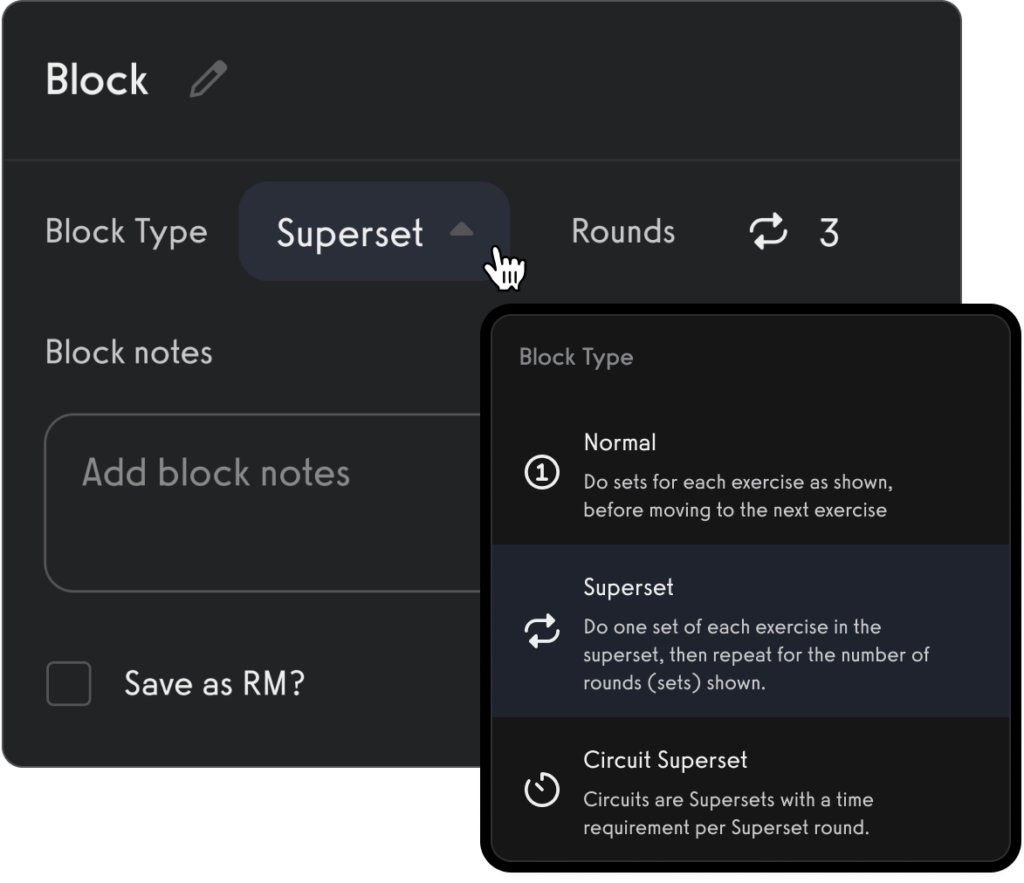
Rep Max Progressions
Program exercise rep max progressions with ease.

Exercise Library
Use the exercise demonstration video library or create your own custom exercise demonstration videos.

TV Workouts
Cast gym TV workouts to in-gym TV screens quickly and efficiently.
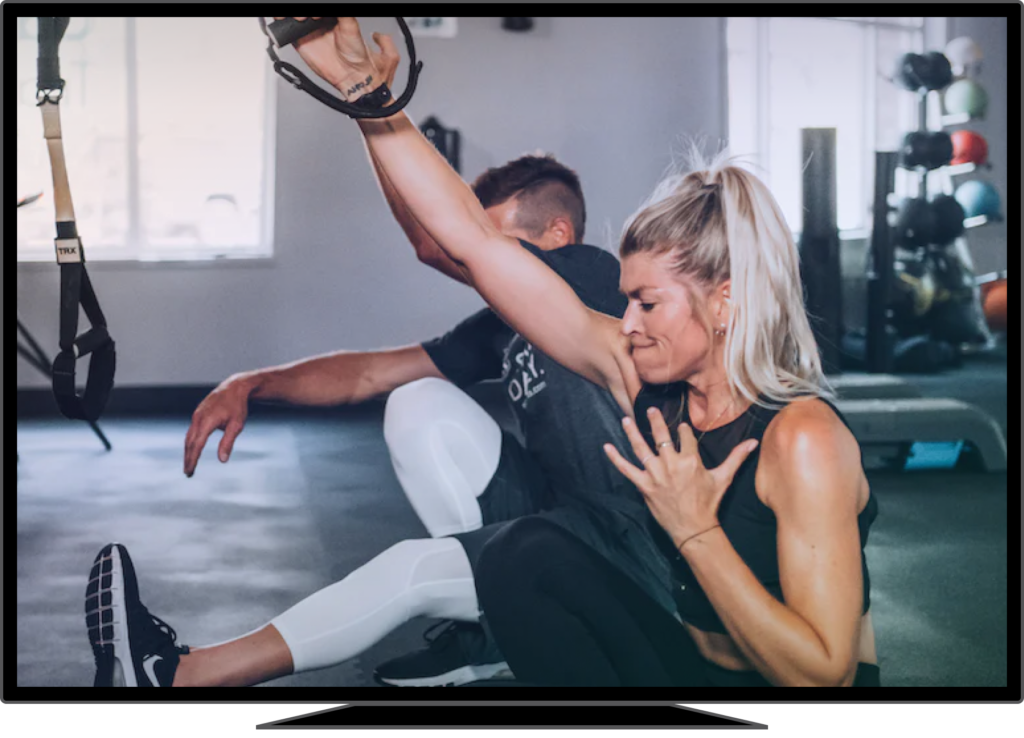
Group and Location Management
Manage multiple groups and locations with ease.

Client Management
Manage clients and gym members with ease. An online training software comparison for personal trainers makes it easy to see why Exercise.com offers the best client management functionality for in-person and online personal training. The best personal fitness trainer software should work for you on the go, just like in the gym. Using free personal training templates is great, but you also need a powerful tool to manage your PT clients.

Appointment Booking
Book appointments for parents and dependents with ease. (Read More: Best Gym Booking Software)

Gym Check-In
Gym check-in software that makes your life easy. (Read More: Best Gym Check-In Software)
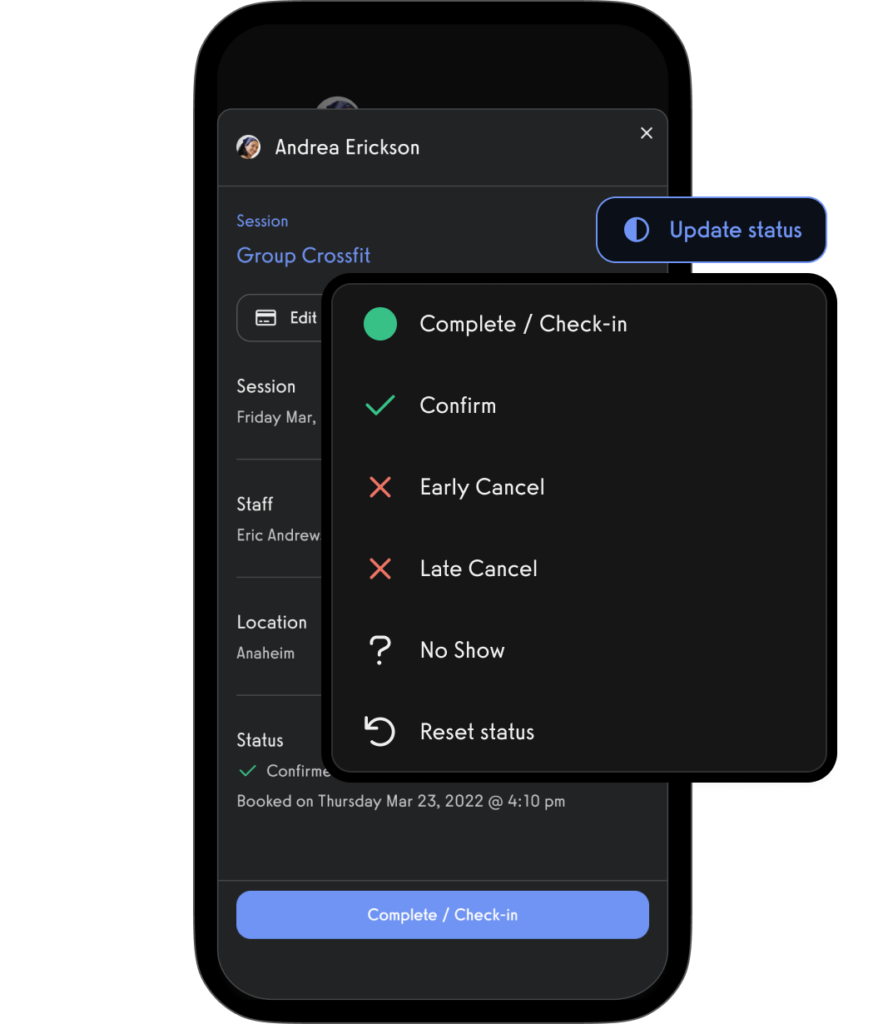
Messaging
Communicate with gym members, athletes, team members, personal training clients, class members, parents, and dependents via SMS, email, and in-app push notification.
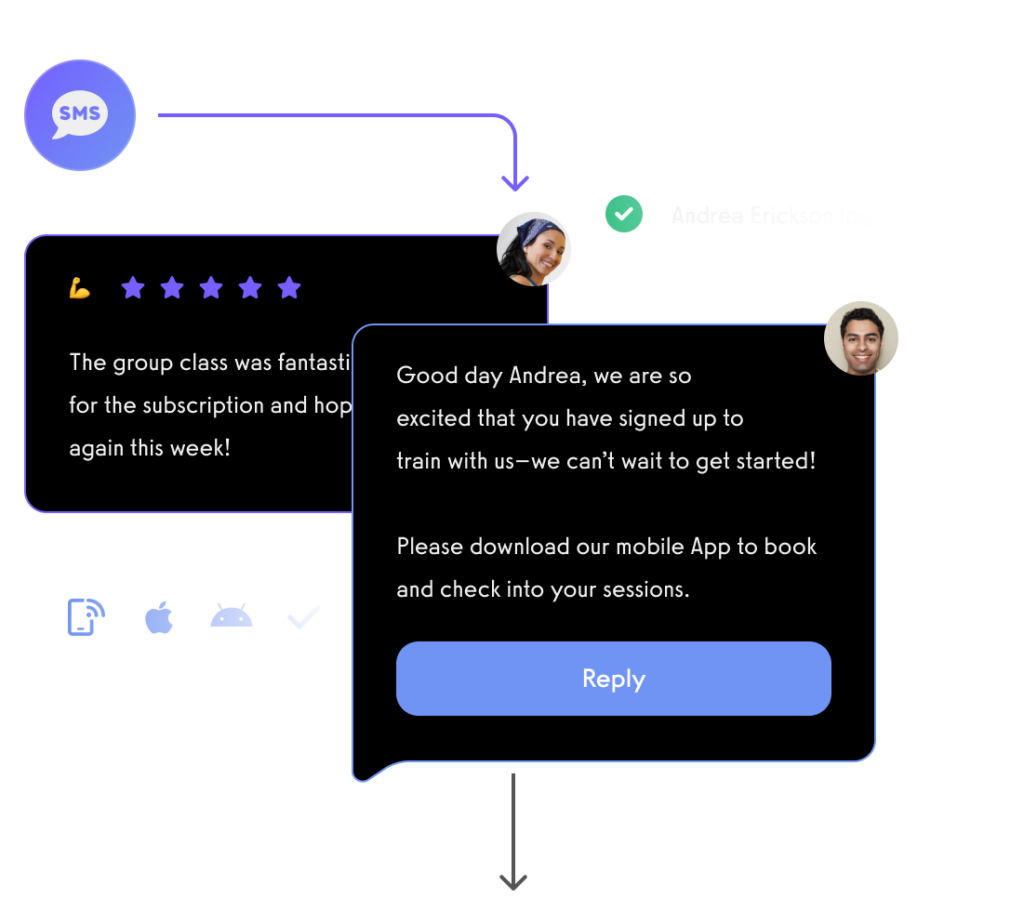
Performance Tracking
View performance over time, track personal records, and other fitness stats with performance reporting dashboards. The best fitness software for personal trainers offers exercise tracking, habit tracking, workout tracking, and more.
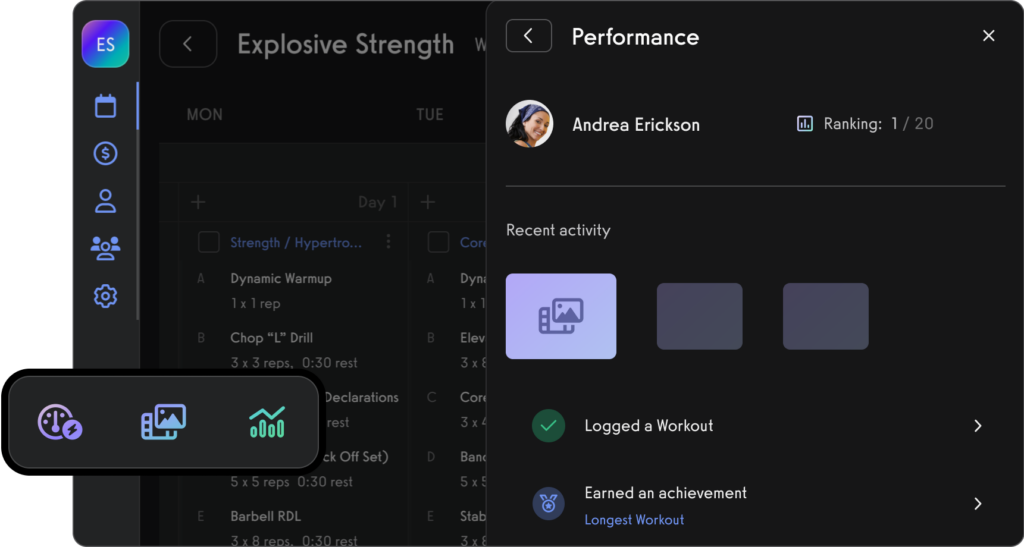
Business Dashboards
And of course, view all of your gym business reports easily too.
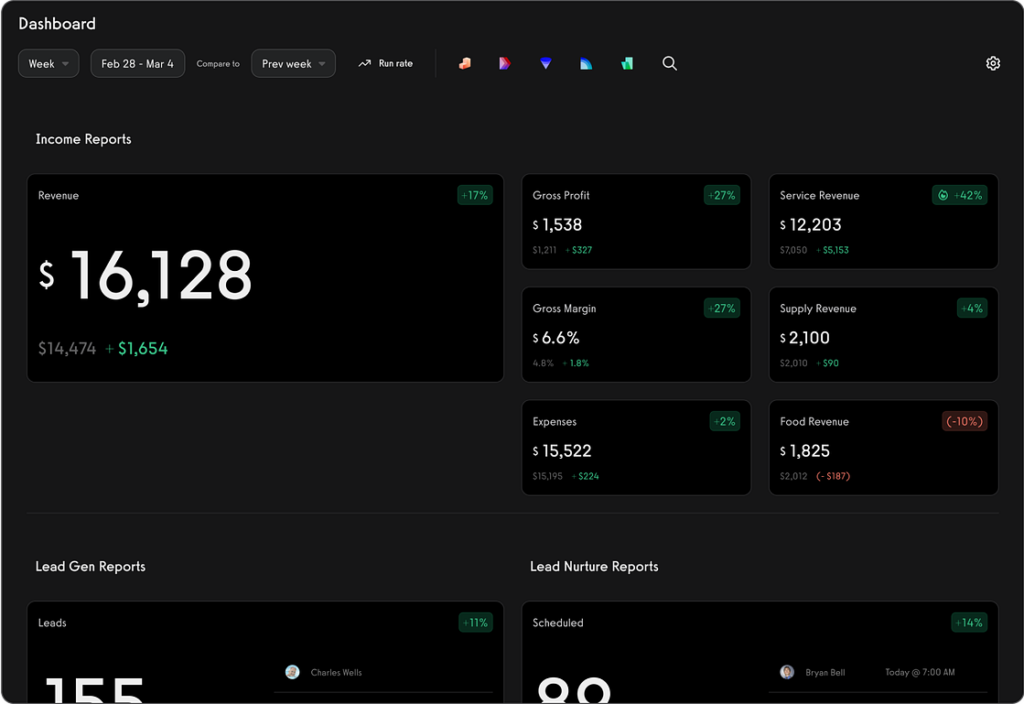
Custom Branded Fitness Apps
All from your custom-branded fitness apps (Read More: Best Gym Mobile Fitness Apps Software)


Want to learn how your fitness business can grow to the next level with the best online software for personal trainers and fitness businesses?
Read More:
Understanding Workout Program Design
Let’s go over some of the major considerations trainers should have in mind about workout program design, whether they are looking for online fitness coaching templates or just some easy pre-made templates for personal trainers. These are the laws that apply to any program or individual workout and will help you understand the templates provided below and will aid in developing your own.
#1 – Plan from the top down; begin with program goal, then workout goal, then exercise selection.
Always be able to identify the training goal that an exercise is helping you accomplish, how it fits into that workout, and how the workout fits the overall training goal. Avoid the common error of planning based around an exercise you want to have done without identifying why it’s being done.
#2 – Strength and Power should be trained before Endurance or Hypertrophy.
Strength, the ability to produce force, and Power, the ability to produce force rapidly, are only improved when trained at or near 100% readiness; an unfatigued state. If a particular muscle is fatigued and can thus only produce 70-80% of its true force potential, the work it can do will not induce a great enough stimulus to cause a strength adaptation.
Training for Endurance or Hypertrophy, on the other hand, can be done successfully under a state of fatigue. In fact, metabolic stress within the muscle is the goal when either fatigue resistance or growth is the desired training effect. When training these characteristics in the same workout, strength and power should, therefore, come first.
#3 – Movements involving the most muscle mass are most appropriate for Strength and Power.
The more motor units of muscle fibers we can bring into action in a movement, the more value each repetition of that movement will have in stimulating change in strength and growth.
More muscle involved correlates directly to more weight being utilized and this ability to handle a heavier load will be the driving factor in gaining strength.
#4 – Choose repetition range based on what the exercise should achieve and is appropriate for.
On the spectrum of reps that can be performed of an exercise, from the 1 Rep Max to the set of 20+, the characteristic being trained varies depending on what you select.
When the intensity is such that you can perform fewer than 5 reps, you will be training primarily strength as it is the limiting factor. Sets of 5 to 10 are in a range that is multi-purpose; equally useful for developing strength and hypertrophy. When maximum reps in a set number in the teens or greater, you are firmly in the hypertrophy/endurance zone.
Most exercises will lend themselves more to a particular range and goal. Those which are systemically stressful and require skill to perform like the squat and deadlift are best utilized in low to moderate rep ranges. Exercises using less muscle mass and weight load are more appropriate for moderate to high reps.
#5 – Exercises induce different levels of stress and thus require different recovery times.
Those movements which use the most muscle mass and greatest weight load induce more neurological stress and muscular fatigue. While this makes them most valuable for stimulating the body to adapt, it also means they cannot be trained effectively as often as low-stress secondary or tertiary movements.
#6 – Training must evolve with trainee advancement.
No program works forever. As a trainer, you know this intuitively even if you haven’t thought deeply about the cause. In basic terms, the more one has adapted already to a given stimulus, the more difficult it will be to illicit further adaption. What’s more, the work required for adaptation will become more and more stressful on the muscles and nervous system.
Whereas a beginner trainee is simply not strong enough in an objective sense to induce more fatigue than they can recover from, the intermediate-to-advanced client can quickly dig themselves into a hole in which performance and progress suffer. With that in mind, a more advanced client requires a more complex strategy for managing training stress; no longer will they be able to simply go to the max on every movement every time.
Read More:
- Personal Training Workout Ideas
- Can you sell workout plans without being certified?
- How do you make a workout program and sell it?
- What can I sell as a fitness influencer?
Weight Training Exercise Classification
When utilizing a workout training template, whether a workout program template in Excel or somewhere else, the best practice is to create a library of exercises broken down by purpose and priority. This will help you plug-and-play when it comes time to personalize the training program or make adjustments over time.
In this example, movements are categorized by the movement pattern, general region of the body, and priority level (primary, secondary, tertiary).
This priority level is determined by the potential for the movement to provoke an adaptive response; the more muscle mass involved, the more weight load utilized, and the more practical (outside the gym) carry-over – the higher the priority level.
Upper Body Push | Upper Body Pull | Lower Body Push | Lower Body Pull | Abdominal | |
|---|---|---|---|---|---|
| Primary | Bench Press | Barbell Row | Back Squat | Deadlift | Rollout |
| Overhead Press | Chin-up / Pull-up | Front Squat | Hex Deadlift | Toes-to-bar | |
| Secondary | Incline Bench Press | Machine/ Cable Row | Lunge | Romanian Deadlift | Hanging Knee Raise |
| Dip | Pulldown | Leg Press | Goodmorning | Sit-up | |
| Tertiary | Dumbbell Rollback | Lateral Raise | Leg Extension | Leg Curl | Plank |
| Pushdown | Curl | Calf Raise | Reverse Hyperextension | Crunch |
You don’t have to use the same collection of exercises to get the benefit of these templates. Fill out your library with exercises you have the most skill with and can coach effectively. Additionally, if you have access to specialized equipment such as a belt squat machine, find where that fits in your own movement hierarchy.

Strength / Hypertrophy Templates
Three-Day, Full-Body
This template is as simple as it gets and is most effective for beginner weightlifters and, let’s face it, if you’re training the general population, you’re almost always training beginner lifters. See the video above for additional info on novice programming.
They are in the fortunate position of being able to utilize only those lifts with the highest bang for your buck, the primary exercises of each movement pattern. Because they’re not yet able to lift weight loads heavy enough to overwhelm their ability to recover, there’s no need for variations of intensity or complex fatigue management. They can simply train the lift and increase the weight each session.
Sunday – Rest
Monday – Primary Lower Push, Primary Upper Push, Primary Lower Pull
Tuesday – Rest
Wednesday – Primary Lower Pull, Primary Upper Push, Primary Upper Pull, Abdominal
Thursday – Rest
Friday – Primary Lower Push, Primary Upper Push, Primary Lower Pull
Saturday – Rest
Workout days with specific movements:
Monday – Back Squat, Bench Press, Deadlift
Wednesday – Hex Deadlift, Overhead Press, Pull-up, Rollout
Friday – Back Squat, Bench Press, Deadlift
Suggested set and rep scheme:
3-5 Sets of 5-8 Reps on all exercises.
Four-Day Split
Best suited to an intermediate or advanced client, this template accounts for the increased training stress and time requirement that results from gaining strength. It does so by dividing upper-body and lower-body movements into separate training days with four sessions per week; a stark difference from the beginner template in the previous section (and one of the differences noted in the above video).
This is advised when one exercise per movement pattern or muscle group is no longer sufficient to elicit strength gain or growth and more volume of work is needed to continue progressing. Additionally, it provides an additional day for recovery before a movement is trained again compared to the full-body, every-other-day routine.
Sunday – Rest
Monday – Primary Lower Push, Primary Lower Pull, Secondary Lower Push, Primary Abdominal
Tuesday – Primary Upper Push, Primary Upper Pull, Secondary Upper Push, Secondary Upper Pull
Wednesday – Rest
Thursday – Primary Lower Pull, Primary Lower Push. Secondary Lower Pull, Primary Abdominal
Friday – Primary Upper Push, Primary Upper Pull, Secondary Upper Push, Secondary Upper Pull
Saturday – Rest
Workout days with specific movements:
Sunday – Rest
Monday – Back Squat, Deadlift, Leg Press, Toes-to-bar
Tuesday – Bench Press, Barbell Row, Dip, Pulldown
Wednesday – Rest
Thursday – Deadlift, Front Squat, Romanian Deadlift, Rollout
Friday – Overhead Press, Pull-up, Incline Bench Press, Cable Row
Saturday – Rest
Suggested set and rep scheme:
3-5 Sets of 5-8 Reps on Primary Movements
3-4 Sets of 8-12 Reps on Secondary Movements
Read More:
Push-Pull-Legs
The Push-Pull-Legs split further divides the work into distinct sessions and differs from the four-day split in that upper body movements are divided into push and pull sessions. In doing so, you create more time in each workout for additional exercises for the same movement pattern. These should be chosen strategically to bring up lagging lifts or muscles.
Note that whereas the previous templates were week-long cycles, this involves nine days to complete two iterations of push, pull, and leg training. As a result, sessions are not tied to specific days of the week.
From a practical standpoint, this is only appropriate for clients who prioritize training highly enough to train on any given day and likely need to be advanced enough to workout solo outside your sessions.
Week 1
Sunday – Rest
Monday – (Push 1) Upper Primary, Upper Secondary, Upper Secondary, Upper Tertiary
Tuesday – (Pull 1) Upper Primary, Upper Secondary, Upper Secondary, Upper Tertiary
Wednesday – Rest
Thursday – (Legs 1) Lower Primary Push, Lower Secondary Pull, Lower Secondary Push, Lower Tertiary Pull
Friday – (Push 2) Upper Primary, Upper Secondary, Upper Secondary, Upper Tertiary
Saturday – Rest
Week 2
Sunday – (Pull 2) Upper Primary, Upper Secondary, Upper Secondary, Upper Tertiary
Monday – (Legs 2) Lower Primary Push, Lower Secondary Pull, Lower Secondary Push, Lower Tertiary Pull
Tuesday – Rest
Wednesday – (Push 1) Upper Primary, Upper Secondary, Upper Secondary, Upper Tertiary
Thursday – (Pull 1) Upper Primary, Upper Secondary, Upper Secondary, Upper Tertiary
Friday – Rest
Saturday – (Legs 1) Lower Primary Push, Lower Secondary Pull, Lower Secondary Push, Lower Tertiary Pull
Workouts with movements:
Push 1: Bench Press, Dip, Incline Bench Press, Dumbbell Rollback
Pull 1: Barbell Row, Pulldown, Machine Row, Curl
Legs 1: Front Squat, Goodmorning, Lunge, Leg Curl
Push 2: Overhead Press, Incline Bench Press, Dip, Pushdown
Pull 2: Pull-up, Machine Row, Pulldown, Lateral Raise
Legs 2: Back Squat, Romanian Deadlift, Leg Press, Reverse Hyper
Suggested set and rep scheme:
3-5 Sets of 5-8 Reps on Primary Movements
3-4 Sets of 8-12 Reps on Secondary Movements
3 Sets of 10-20 Reps on Tertiary Movements
Add abdominal exercises as time allows. One option is to superset the abdominal exercise with the final movement from each workout drawn from the tertiary list.
The Rules for Designing Conditioning Workouts
#1 – Use large muscle, multi-joint exercises
The more muscle involved and the bigger the range-of-motion, the greater the requirement on the cardiorespiratory system to supply oxygen. Thus, bigger movement equals more bang for your buck.
Additionally, in compound movements, muscle fatigue is spread throughout more tissue making it less likely to be a limiting factor when the goal is cardiorespiratory training.
#2 – Alternate major movement patterns
Look at exercises based on the gross movement pattern – pulling, pushing, flexion, extension.
By organizing the workout so that opposing patterns are paired together or alternated, we avoid muscle endurance limiting the time to fatigue before heart rate and respiratory rate have reached the desired intensity.
#3 – Avoid highly technical movements
Exercises that require significant attention to technique or are prone to technique breakdown with fatigue have no place in conditioning workouts.
Utilizing complex movements such as the snatch or clean and jerk with power and technique as the limiting factors is more dangerous and less effective than difficult but simple movements during which the trainee can simply focus on their effort and not giving in to fatigue.
#4 – Identify the training variables and make it scalable
Know what’s being trained by each movement in the workout, don’t just work out to get tired. The workout as a whole and each component part should have a purpose.
Select the movement that helps you best accomplish that effect and identify ahead of time what variable will be scaled up to yield future improvement. For example, with the goal of endurance in a long duration activity, one may choose a stationary bike. The variable to scale up would be time, the constants would be RPMs and resistance.
#5 – Choose work/rest ratio based on max output or max duration goals
As in strength training with weights, when the goal is maximum work output, each set or work interval should be performed as close as possible to 100% capacity. This requires adequate rest between efforts so that high output can be maintained and the accumulation of fatigue is avoided.
When training for maximum duration or endurance, however, one needs to work in a fatigued state to improve fatigue resistance. Exercises will be performed at sub maximal intensity for longer periods and with little or no rest between efforts.
With Exercise.com you can sell workout plans online. Check out the best workout plan sales software to see what you can do.
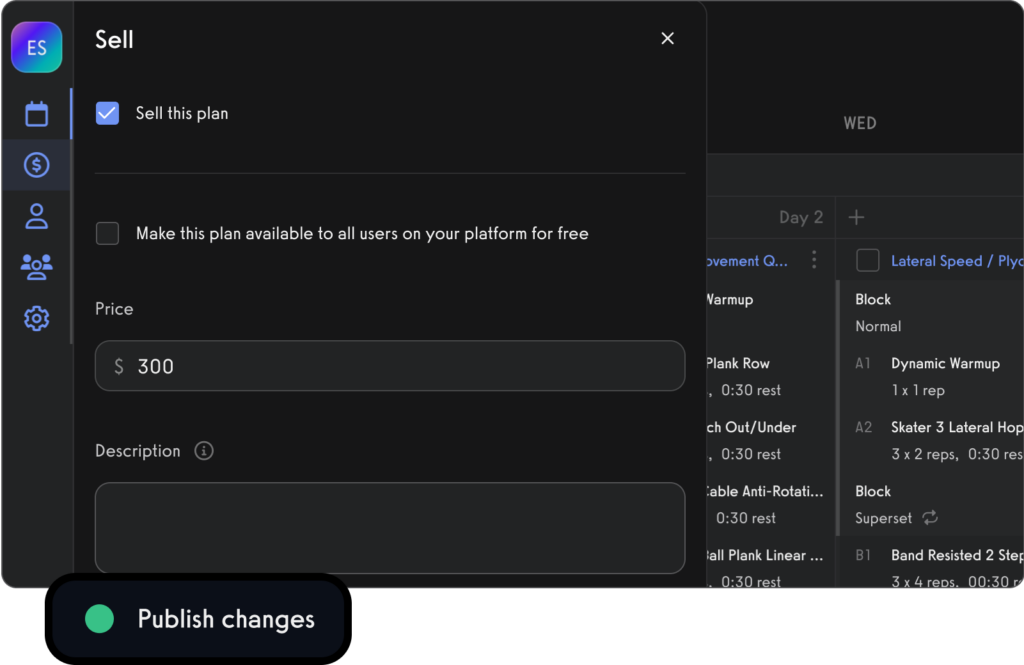
Conditioning Templates
For the following workout templates, let’s look at the following collection of movements:
Battle Rope Slam (Upper dominant)
Lunge (Lower dominant)
Dumbbell Thruster (Full-body extension)
V-up (Abdominal Flexion)
Kettlebell Swing (Hip Extension)
Renegade Row (Full-body Isometric, Upper Push and Pull, seen below)
Keeping the exercises consistent for all the examples, you’ll be able to more clearly see how each workout differs in structure. The movement patterns these exercises represent do not necessarily need to be copied but have been chosen in accordance with the exercise selection and order rules listed above.
Total Work
Assign your client or group the total amount of work to be done in the workout based on reps per movement. It will be up to them to break down as needed.
Insist that the rep quota for each exercise is completed before moving on to the next. This is most useful for endurance as it encourages the trainee to complete as many reps as they can in each effort.
Reps – Movement
100 – Battle Rope Slams
100 – Lunges
50 – Dumbbell Thrusters
100 – V-ups
100 – Kettlebell Swings
50 – Renegade Rows
How to progress:
Increase the total rep count for each movement, particularly those which the trainee completed in only two or three sets.
Circuit
The circuit is a collection of exercises performed for multiple predetermined rounds in the same order. This example maintains the same volume of work for each movement as given above in the Total Work template, but provides one advantage:
The division of reps into smaller sets means the trainee should be able to perform those reps at a higher intensity compared to performing an exercise to exhaustion. This is useful for training clients to work at maximum output with recovery between bouts.
5 Rounds of:
20 – Battle Rope Slams
20 – Lunges
10 – Dumbbell Thrusters
20 – V-ups
20 – Kettlebell Swings
10 – Renegade Rows
How to progress:
Increase the number of rounds or decrease rest between exercises.
As Many Rounds As Possible
The AMRAP workout is a type of circuit training. Rather than strictly controlling the volume of work like the traditional circuit, the total work is open-ended and speed in each exercise can vary.
This is useful for testing the capacity of a new client for whom you have no accurate gauge of how much work they can complete in a given time. Additionally, this style is suited to group training as it accounts for a variety of fitness levels; high-performers will perform several rounds, novices will perform few, but all who work to their full capacity will get a training effect.
X Rounds in 30 minutes
20 – Battle Rope Slams
20 – Lunges
10 – Dumbbell Thrusters
20 – V-ups
20 – Kettlebell Swings
10 – Renegade Rows
How to progress:
Trainee must complete more rounds within the time period with each repeated session.
Every Minute on the Minute
The trainee will perform the assigned number of reps for each exercise when a timer goes off at one-minute intervals (as seen in the demo video above). Exercises should be performed as fast as possible to leave rest time before the next minute begins.
The EMOM format encourages maximum output to complete the exercises quickly but also requires work in a pre-fatigued state due to the ready-or-not nature of the set start time.
A) Top of every minute for 10 minutes
10 – Battle Rope Slams
10 – Lunges
B) Top of every minute for 10 minutes
5 – Dumbbell Thrusters
10 – V-ups
C) Top of every minute for 10 minutes
10 – Kettlebell Swings
5 – Renegade Rows
How to progress:
Increase the required reps within each one-minute interval.
Warm-Up Design
Getting your client prepared for training with a warm-up may be the first step on a day-to-day basis in the midst of your program, but when designing that program it should be one of the final steps. Here’s why:
The role of the warm-up is preparation for the movement that’s to come in the workout and must, therefore, be specific to what those movements are. It should also prepare the body for the right intensity and duration of exercises as determined by the sets and reps. Covering both of these needs requires that we’ve already decided upon what the workout will consist of.
A generic assignment like “ten minutes on a stationary bike” is not adequate preparation for strength training, nor is jogging adequate preparation for anything besides more jogging. Here’s what we must accomplish in the warm-up:
- Increase blood flow to muscles being trained
- Elevate core temperature to aid tissue pliability
- Prepare muscles and joints by moving them through a range of motion similar to the coming exercises
- Ready the nervous system to engage powerful muscle activation
The order of activities in a warm-up should be such that it moves from general to specific in relation to the training movements. For a session in which the primary movement is the Barbell Back Squat, here’s an example:
WARM-UP ORDER: GENERAL → SPECIFIC
Squat warm-up: Row 500m, 20 Walking high knees, 20 Walking lunges, 20 Bodyweight squats, 10 Box Jumps, 10 Barbell squats with an empty bar
Each of these serves one or more of the warm-up’s four goals. All of them contribute to increasing blood flow, elevating body temperature, and improving joint ROM. Box Jumps in particular engage and prepare the nervous system due to the powerful, high-speed muscle contraction of jumping. And finally, the most specific is the Barbell Squat itself which we’d ramp up from an empty bar to the highest weight for the day.
While the planning of warm-ups should be an in-depth process, that doesn’t mean warm-ups need to be lengthy or complex. In fact, a well-thought-out warm-up where every movement is there for a reason will get your client prepared quicker than a random assignment that wastes time and energy. The above example is a process of only 5-7 minutes.
For full-body weight training, use the same criteria and add warm-up movements as needed to prepare for other exercises. In certain types of training, like bodyweight-only conditioning workouts, the exercises themselves can serve as the warm-up. Simply have your client complete a warm-up round where each exercise is performed at a comfortable pace and low intensity.
How can I create personal training workout templates?
Creating personal training workout templates involves understanding your client’s needs, fitness levels, and goals. Start by designing a balanced program that includes warm-up, strength training, cardio, flexibility, and cool-down sections. Exercise.com’s gym management software provides robust workout creation and other top personal trainer tools, allowing you to create and customize templates easily, record exercise videos, and include them in your programs. You can then save these workout templates for personal trainers for use with other clients or modify them as needed.
Read More:
Where can I find free personal training workout templates online?
There are many resources online to find free personal training workout templates, from fitness blogs to personal trainer websites. However, it’s important to ensure that these templates are created by certified professionals and are suitable for your client’s fitness level and goals. With Exercise.com, you can have access to pre-made workout templates and create your own, ensuring you’re delivering quality and personalized workouts to your clients.
Can I use pre-made workout templates to save time when programming for my clients?
Absolutely, using pre-made workout templates can significantly save time when programming for your clients. Exercise.com offers a range of pre-made workout templates and fitness program templates that can be customized to suit your clients’ specific needs. It allows you to streamline your programming process while ensuring that your clients are getting professionally designed, personalized workouts.
Can I sell my workouts made from templates to clients?
Yes, with the right platform, you can sell your workout plans to clients. Exercise.com’s gym management software offers a comprehensive solution to sell your workouts and fitness plans. It includes ecommerce functionality that allows you to sell your workout templates as standalone products or bundled in membership plans.
Can I deliver workouts made from templates to my clients digitally?
Yes, digital delivery of workouts is a fantastic way to provide fitness services to your clients, and it’s possible with the right platform. Exercise.com’s gym management software enables you to deliver workouts digitally to your clients’ devices. It’s an effective way to keep clients engaged, track their progress, and provide them with the flexibility to workout anytime, anywhere.
Read More:
Should I use free personal trainer workout templates in Excel, Google Sheets, or PDF?
While you can use Excel, Google Sheets, or PDFs to create workout templates, they may lack the functionality that a dedicated fitness software platform like Exercise.com can offer. With Exercise.com, you get a full suite of tools for creating and delivering workouts, tracking client progress, communicating with clients, and even selling workouts—all in one place.
What are some good one hour personal training session example templates?
A good one hour personal training session might include a warm-up, resistance training, cardio, flexibility work, and a cool-down. The specifics would depend on the client’s fitness level and goals. With Exercise.com, you can create and save such templates, tailor them to each client, and even include video demonstrations for each exercise.
What is the best software to create, sell, and deliver workouts easily?
Exercise.com is the best software to create, sell, and deliver workouts easily. It is an all-in-one gym management solution with robust workout creation tools, ecommerce functionality, and workout delivery capabilities. The platform is fully customizable and includes features such as performance tracking and client engagement tools.
Read More:
- Best Gym Workout Plan Sales Software
- Best Gym Sales Funnel Software
- Best Gym On-Demand Workout Software
Does Exercise.com have pre-made exercise demonstration videos that I can use in my workout templates?
Yes, Exercise.com offers a comprehensive library of pre-made exercise demonstration videos that you can use in your workout templates. These high-quality videos provide clear guidance on how to perform each exercise correctly, adding value to your service and helping to ensure your clients’ safety and progress.
Read More:
- Best Gym Exercise Library Software
- Best Gym Exercise Rep Max Progressions Software
- Best Gym Exercise Supersets Software
Does Exercise.com allow me to share and save workout templates with other trainers in my gym and other gym locations?
Yes, Exercise.com facilitates collaboration and sharing among trainers. With its comprehensive gym management software, you can create, save, and share workout templates with other trainers in your gym or across multiple gym locations. This feature ensures consistency in the training programs provided to clients and enables trainers to learn from each other’s best practices.
Read More: Best Gym Multi-Location Software
How can Exercise.com help me be more efficient as a personal trainer or fitness business owner when it comes to creating workouts?
Exercise.com provides a robust set of tools designed specifically to streamline the process of creating workouts. With its workout creation and delivery system, you can create personalized workout templates, include exercise demonstration videos, and deliver them digitally to your clients’ devices. The platform also includes performance tracking and engagement tools, which helps to enhance client interaction and satisfaction. Furthermore, with Exercise.com, you can sell workouts directly through your branded fitness apps, turning your training services into a scalable product. The software provides all the necessary tools in one place, saving you time and effort and making your operations more efficient and effective.
Read More:
How do personal trainers create workout plans?
Personal trainers create workout plans by assessing their clients’ fitness levels, goals, and preferences. This process often involves:
- Initial Assessment: Understanding the client’s health history, fitness level, and specific goals.
- Personalization: Tailoring the plan to the client’s unique needs, which may include weight loss, strength training, flexibility, or endurance building.
- Utilizing Templates and Tools: Many trainers use personal training templates or personal training software to streamline the process. Templates like a personal trainer program template or a personal training excel template can be particularly helpful.
Tools like Exercise.com offer comprehensive solutions for personal trainers to create, manage, and track workout plans efficiently. With features like customizable workout programming templates, personal trainers can develop effective and personalized plans for clients, enhancing the overall training experience.
Personal trainers create effective workout plans by utilizing various resources, including personal trainer templates for free download, personal training excel templates, and workout programming templates. Exercise.com emerges as a superior choice here, offering an extensive library of customizable workout templates, from free workout templates for personal trainers to comprehensive personal training program design templates. With Exercise.com, trainers can easily adapt a 1-hour personal training session example or a personal training plan template to suit each client’s unique fitness goals, streamlining the process of creating personalized workout regimes.
How do I structure a workout program for a client?
Structuring a workout program for a client is streamlined using tools like personal training program template PDFs and personal trainer program templates. Exercise.com’s platform enhances this process by providing a range of exercise programming templates and customizable client workout templates. Whether it’s using a personal training excel template or drawing inspiration from printable workout templates for personal trainers, Exercise.com offers the versatility and comprehensive tools necessary to create well-structured, client-specific workout programs.
How do I create a workout template?
Creating a workout template is made efficient and user-friendly with Exercise.com. The platform offers a variety of templates, including fitness programming templates, personal training exercise templates, and online fitness program templates. Whether personal trainers prefer using a personal trainer workout template Excel format or a more traditional client workout template, Exercise.com’s software provides the flexibility and resources needed to develop tailored workout plans. The platform’s ability to adapt to various training styles, from high-intensity sessions to strength training programs, makes it an invaluable tool for personal trainers.
How do you structure a 30-minute personal training session?
Structuring a 30-minute personal training session efficiently is crucial. Personal trainers can use tools like personal training session templates or PT session plan templates, available on platforms like Exercise.com. This software helps in designing concise yet effective workouts, focusing on key exercises that meet the client’s objectives within the limited timeframe. With Exercise.com, trainers can access a range of templates, from high-intensity interval training to strength and conditioning, ensuring a productive session.
Read More:
- 30-Minute Personal Training Session Ideas
- How Much to Charge for a 30-Minute Personal Training Session
How much do personal trainers charge for a workout plan?
The charge for a workout plan by personal trainers varies, but leveraging resources like personal training programming templates and personal training packages templates can add value to their services. Exercise.com assists in this aspect by providing a platform where trainers can not only create comprehensive workout plans using their personal training programme templates but also manage billing and client packages efficiently, adding professionalism and value to their services.
Read More: How Much to Charge for a Workout Plan
How can I create workout plans online and sell them?
Creating and selling workout plans online is streamlined with platforms like Exercise.com. Trainers can utilize online personal training program templates and fitness program design templates to craft diverse workout plans. Exercise.com’s e-commerce capabilities enable trainers to effectively market and sell their plans, reaching a wider audience. From strength program templates to fitness training program templates, the platform caters to various training styles, making it an ideal choice for expanding a personal training business online.
Read More: How to Make Money Selling Workouts Online
What is the best website or app to make workout plans for clients?
When it comes to creating workout plans for clients, Exercise.com stands out as one of the best websites and apps. Its comprehensive features include a wide range of personal training templates, from personal trainer excel templates to personal training program design templates, catering to various workout styles and client needs. The platform’s user-friendly interface and robust functionalities make it a top choice for personal trainers seeking efficiency and effectiveness in program design.
What should a PT session look like?
A PT session should be well-structured and client-focused. Exercise.com can play a pivotal role in this process, offering personal trainers a variety of templates and tools, such as personal training session templates and PT plan examples, to design sessions that are engaging and effective. The platform ensures that every session, whether it’s based on a personal trainer exercise plan or a more generalized fitness training template, is tailored to meet individual client goals and preferences.
How long should a PT session be?
The length of a PT session can vary, but typically ranges from 30 to 60 minutes. Exercise.com aids personal trainers in making the most of these sessions, regardless of their duration. With features like customizable workout templates and efficient scheduling tools, trainers can ensure each session is optimally planned and executed, whether it’s a short, high-intensity workout or a longer, more comprehensive training session.
How do personal trainers track progress?
Personal trainers track progress using a variety of methods, including personal training spreadsheets and digital tracking tools. Exercise.com offers an all-in-one solution, providing personal trainers with robust tracking capabilities. From monitoring workout achievements to tracking client milestones, the software’s comprehensive analytics tools ensure that every aspect of a client’s progress is recorded and analyzed for continuous improvement.
What strategies do personal trainers use?
Personal trainers employ various strategies to ensure client success, including individualized program design, continuous education, and effective client communication. Platforms like Exercise.com support these strategies by offering a range of tools, from personal training programming templates to client management systems, enabling trainers to provide personalized, efficient, and engaging training experiences.
What are the best personal trainer client tracking apps?
The best personal trainer client tracking apps include those that offer comprehensive features for monitoring client progress, scheduling, and communication. Exercise.com is a leading choice, providing an integrated system for tracking workouts, dietary habits, and overall fitness progress, making it an essential tool for personal trainers focused on delivering results-driven training.
Read More: Best Personal Training Client Tracking Apps
What is the best personal training software?
The best personal training software is one that offers versatility, comprehensive features, and user-friendly interfaces. Exercise.com stands out in this regard, providing personal trainers with everything from workout templates and client management tools to progress tracking and e-commerce functionalities. It’s an all-encompassing solution for personal trainers looking to elevate their training services.
Read More: Best Personal Training Software
How can Exercise.com help me create workout plans for clients?
Exercise.com helps personal trainers create effective workout plans for clients by offering a wide array of customizable workout templates, including personal training exercise templates and fitness programming templates. The platform’s flexibility allows trainers to cater to various client needs, whether it’s designing a specific strength program or a general fitness plan. With its intuitive design and comprehensive features, Exercise.com simplifies the process of creating, managing, and delivering high-quality workout plans.
Exercise.com Can Help!
The best way to organize your training programs and to streamline the planning process is to utilize Exercise.com’s all-in-one Fitness Business Management Software which helps you manage all of the sales and financial aspects of your business in addition to upgrading your fitness assessment and workout programming capabilities.
Here’s a quick walkthrough to show how easy it is to create and deliver your training programs:
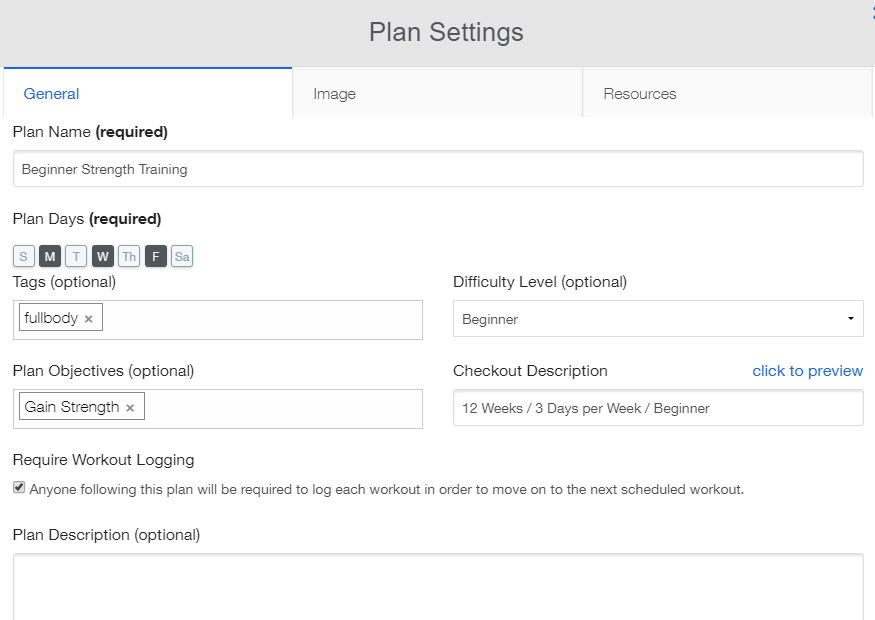
1) From the Plans tab, select Create New Plan to display this dialog box where you’ll create the program outline.
Give your program a name, and assign frequency and objectives. Give it a checkout description so your online customers can register for the program through your customized mobile app.
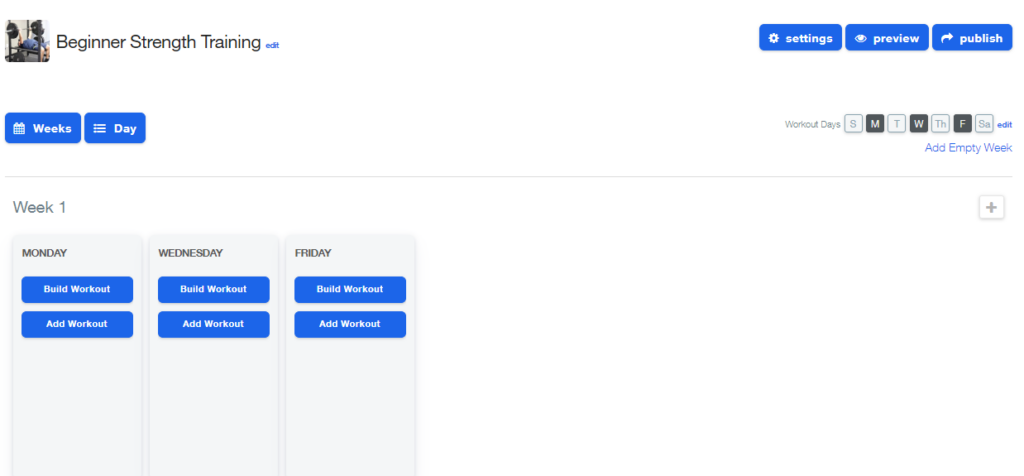
2) Here is the week view of our program, Beginner Strength Training. Monday, Wednesday, and Friday now have empty workouts, next let’s fill those in by selecting Build Workout.

3) Now, in the workout creation area, we’ll add exercises from the left sidebar. You can type the name into the search bar which will pull results from the exercise library or select from the Favorite and Recent Exercises tabs that the software automatically generates based on what you’ve used.
Having added the exercises, you can fill in all of the details on each one; sets, reps, rest, and even tempo. By default, each exercise will show the collapsed view which saves space on-screen until you expand it (if needed) to add extra details like variation between sets and technique notes.

4) Back in the week view, we now have ready-to-go workouts which can be easily duplicated to more weeks or moved with a simple drag and drop feature.
The new program can be assigned to clients and published to be available to new clients online.
To learn more about leveling up your training and business with Exercise.com, schedule a demo with our team today. On the call, we’ll show you how our software is helping elite-level trainers with customized business solutions and what it can do for you.











